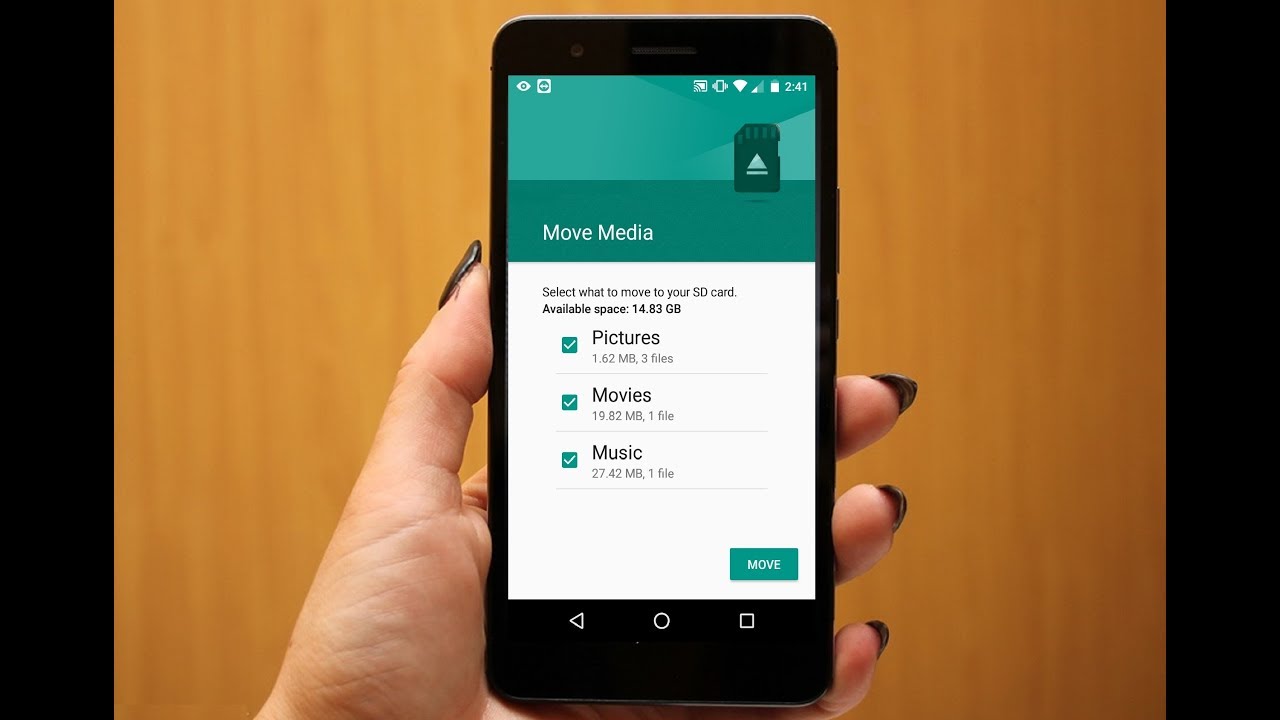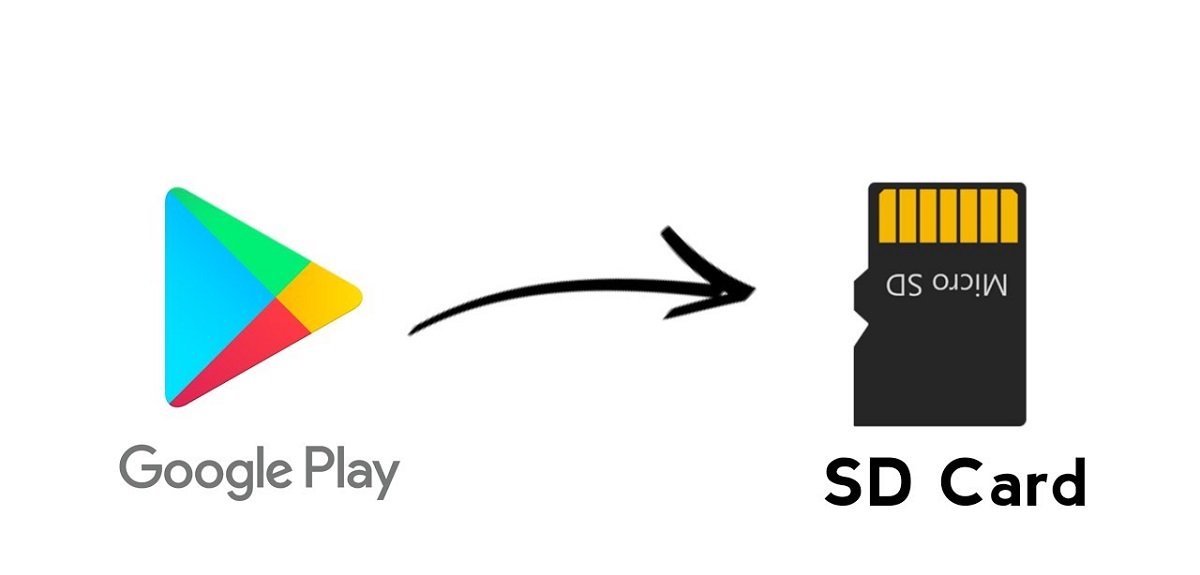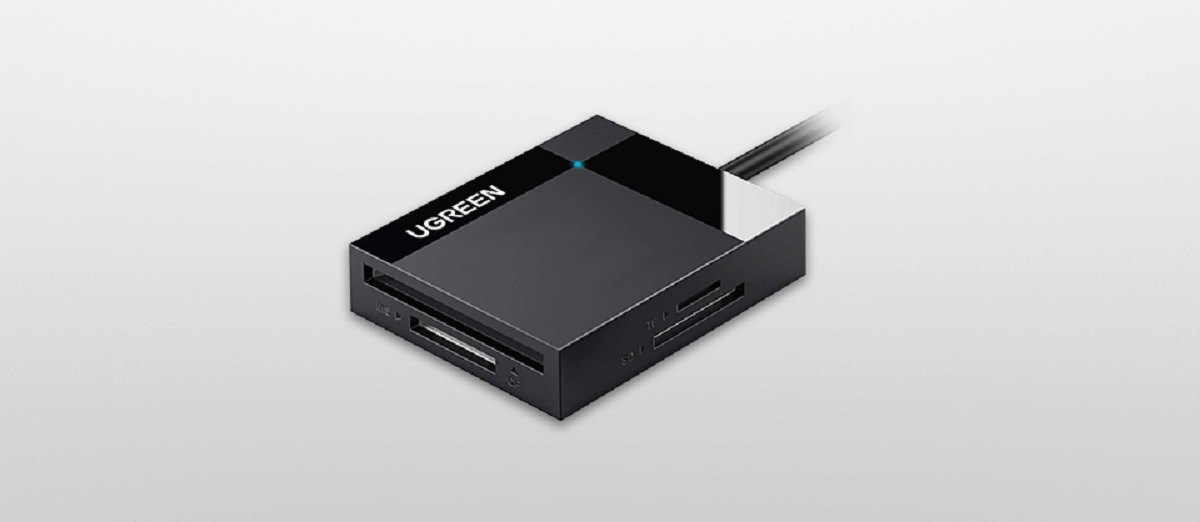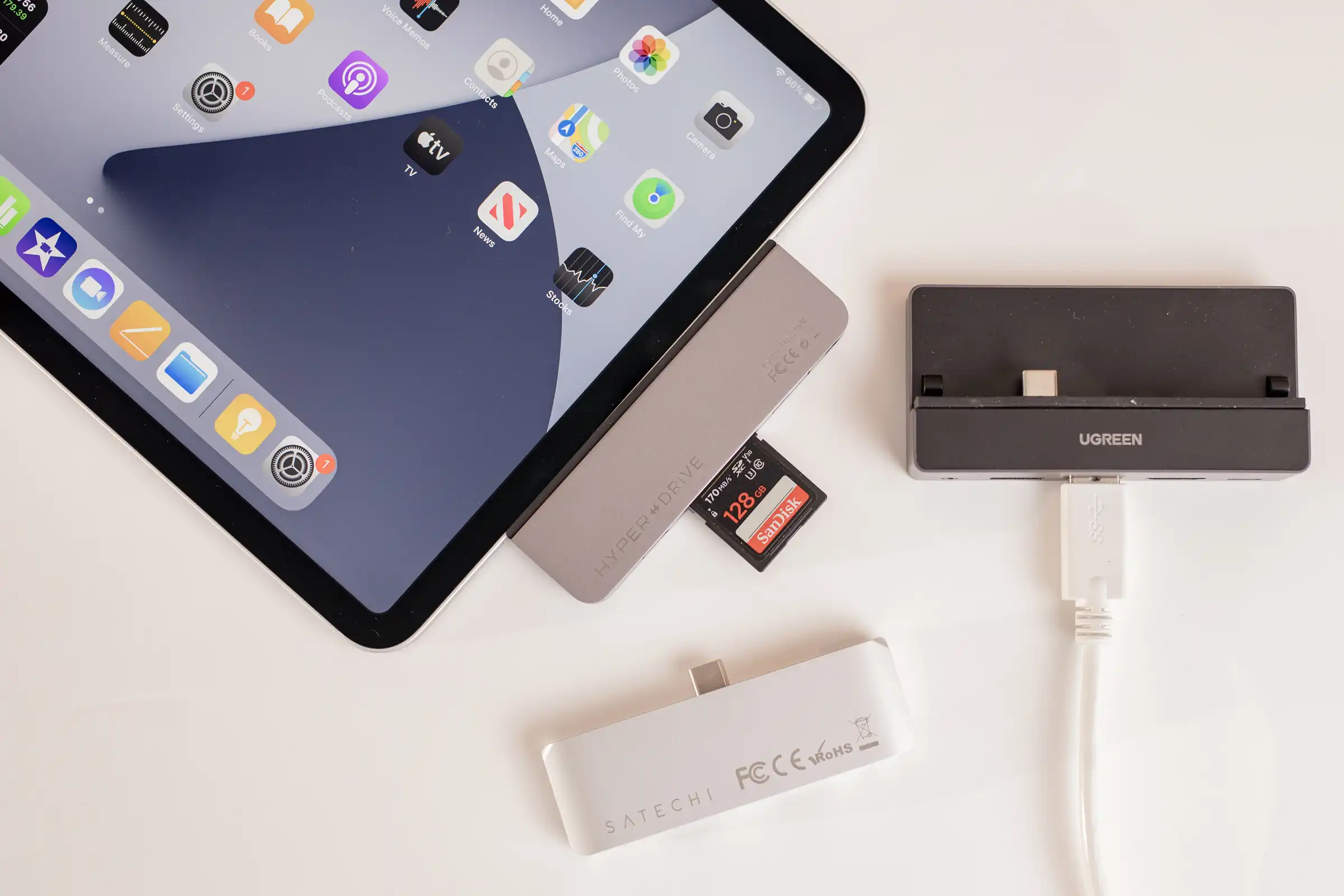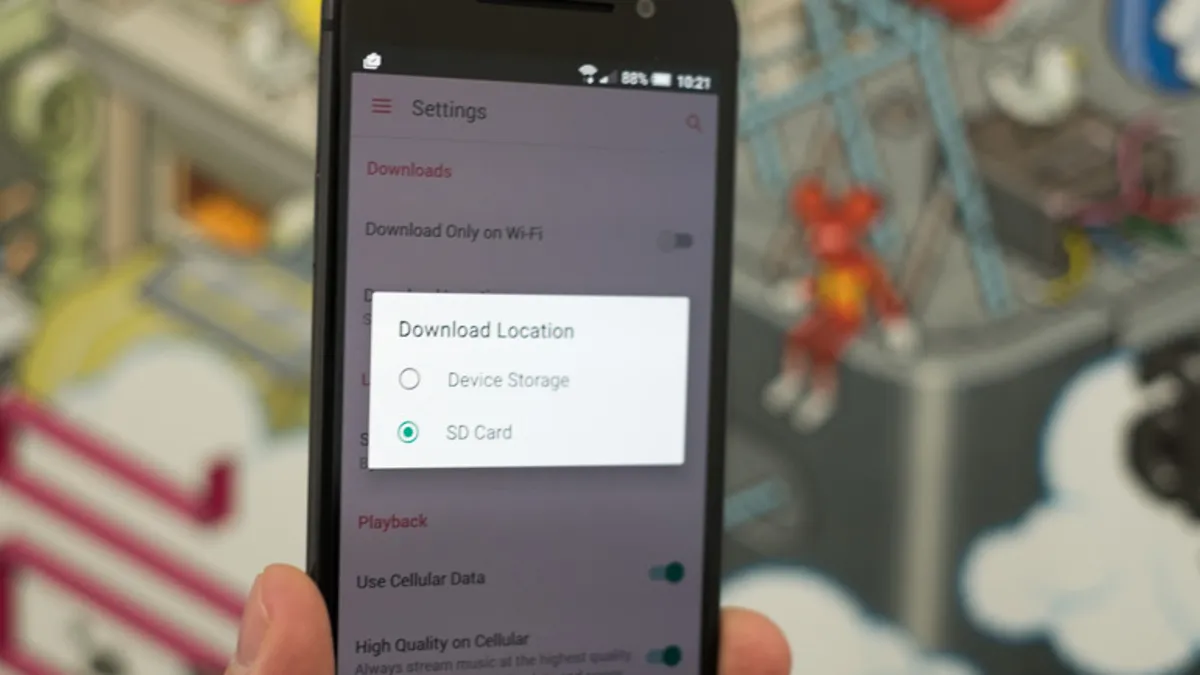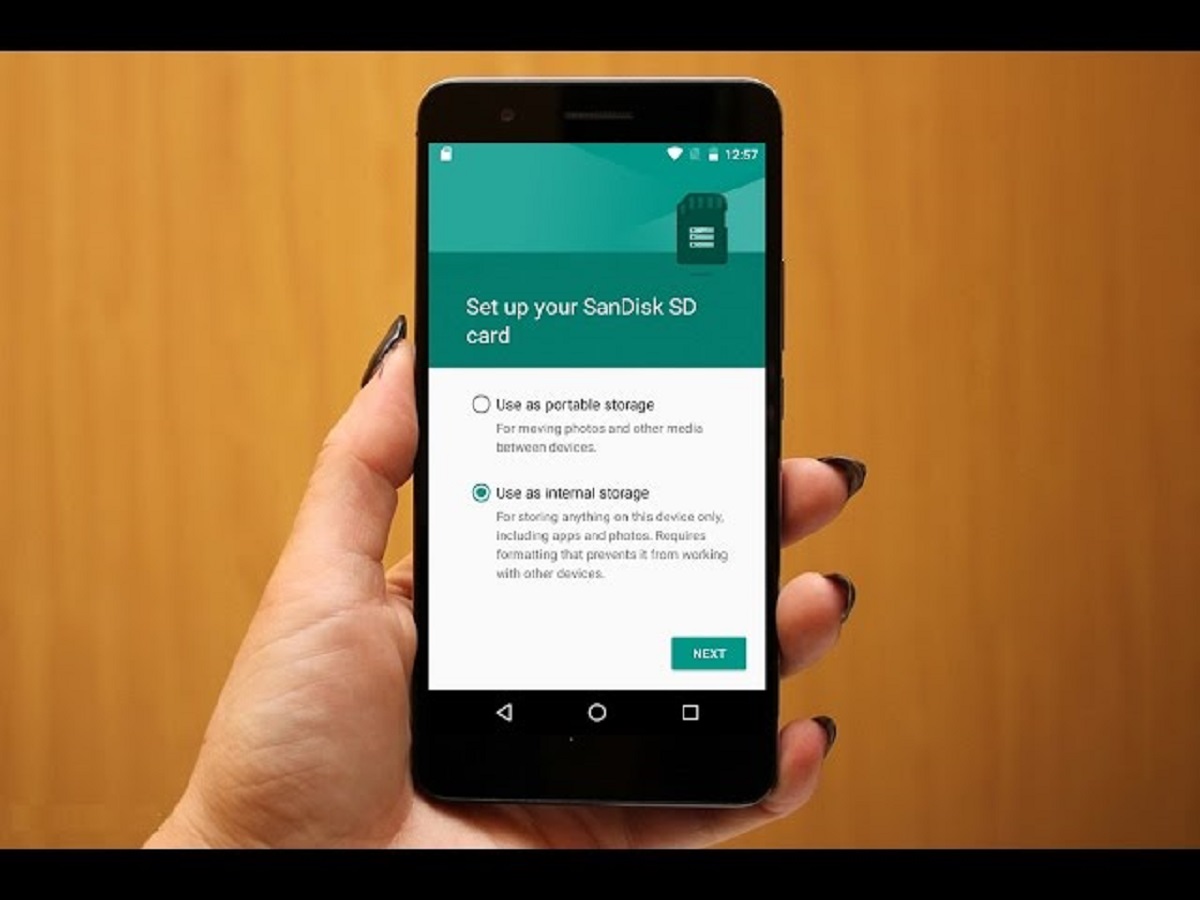Introduction
Transferring files from your phone to an SD card is a great way to free up storage space on your device and ensure that your important data is safely backed up. Whether you have a large collection of photos, videos, or documents, moving them to an SD card can help optimize your phone’s performance and allow you to store even more files.
But before you embark on this process, it’s essential to understand the compatibility and capacity of your phone and SD card. Not all phones support external storage through an SD card, and the storage capacity of your SD card may limit the amount of data you can transfer. By taking these factors into account, you can ensure a smooth and successful file transfer.
In this guide, we will walk you through the steps to move files from your phone to an SD card. Whether you’re using an Android or iOS device, the process is relatively straightforward. We will provide detailed instructions to help you navigate through your phone’s file management system and choose the right destination folder for your files.
By following these steps, you’ll be able to declutter your phone’s internal storage and have peace of mind knowing that your files are stored safely on an external medium. Let’s get started with the first step, where we check the compatibility and capacity of your devices.
Step 1: Checking the Compatibility and Capacity
Before you begin transferring files from your phone to an SD card, it’s crucial to ensure that your phone supports external storage and that the SD card has sufficient capacity to accommodate your files.
Firstly, check if your phone has an SD card slot. Not all smartphones have this feature, particularly some iPhone models. If your phone doesn’t have an SD card slot, you may need to explore alternative methods for increasing your storage space, such as utilizing cloud storage.
If your phone does have an SD card slot, the next step is to determine the maximum capacity it can support. This information can usually be found in your phone’s user manual or by conducting a quick online search using the model name and specifications. Remember that each phone has a specific limit on the SD card capacity it can handle. For example, some phones may support up to 128GB, while others can accommodate larger cards like 256GB or even 512GB.
Once you’ve identified the maximum SD card capacity your phone can handle, you need to acquire an SD card that meets these specifications. Consider the amount of storage you require for your files, such as photos, videos, music, or documents. Keep in mind that if you plan to store a large number of high-resolution files, you may need a higher capacity SD card.
When purchasing an SD card, look for reputable brands and ensure that it meets industry standards. It’s wise to choose a well-known and reliable brand to minimize the risk of data loss or card malfunctions. Additionally, be aware that counterfeit SD cards are prevalent in the market, so it’s essential to purchase from trusted sources.
By checking the compatibility of your phone and acquiring an appropriate SD card with sufficient capacity, you can proceed with confidence to the next step of transferring your files. In the following steps, we will guide you through the process of inserting the SD card and moving your files successfully.
Step 2: Inserting the SD Card
Now that you have confirmed the compatibility and acquired the right SD card for your phone, it’s time to insert the SD card into your device. Follow these simple steps to successfully insert the SD card:
- Locate the SD card slot on your phone. The location may vary depending on the device model, but it is generally found on the side or back of the phone.
- If your phone has a removable back cover, power off your device before proceeding. Look for a small notch or groove near the edge of the back cover and gently pry it open using your fingers or a small tool. Be careful not to apply too much force to avoid damaging the cover or phone.
- Once the back cover is open, you should see the battery compartment. Look for a slot labeled for the SD card, usually located near the SIM card slot. Some phones may have a dedicated tray for both the SD card and SIM card, while others may share a single tray for both.
- Take your SD card and carefully align it with the slot. Note that the card has a specific orientation, so ensure that you insert it in the correct direction. The card should slide in smoothly without any force.
- Once the SD card is inserted, gently push it in until it is fully seated in the slot. It should be level with the back of the phone, and no part of the card should be protruding.
- If you had removed the back cover, carefully replace it by aligning it back into position. Press it down gently until you hear a click, indicating that it is securely attached.
- Finally, power on your device. Your phone should recognize the newly inserted SD card and automatically configure it for use. If prompted, follow any on-screen instructions to format the SD card, although this step is often optional.
With the SD card successfully inserted into your phone, you are now ready to proceed with the next step of formatting the SD card, which can help optimize its performance and prepare it for storing your files.
Step 3: Formatting the SD Card (Optional)
Formatting the SD card is an optional but recommended step to ensure optimal performance and compatibility with your phone. This process will erase any existing data on the SD card, so be sure to backup any important files beforehand. Here’s how to format the SD card:
- Go to your phone’s Settings menu and find the Storage or Memory section. The exact location may vary depending on your device model and operating system.
- Within the Storage or Memory settings, you should see a list of available storage options, including the SD card. Tap on the SD card option to access its settings.
- Look for the Format or Erase option and tap on it. Note that the wording may differ slightly depending on your device.
- Before proceeding with the format, you may be prompted to confirm your action or warned about data loss. Take a moment to review the information, and if you’re ready to proceed, tap on Format or Erase.
- Your phone will now initiate the formatting process. Depending on the size and speed of your SD card, this may take a few minutes. Avoid removing the SD card or powering off your phone during this time.
- Once the formatting is complete, you should see a notification or confirmation message on your screen. Your SD card is now ready to use.
Formatting the SD card prepares it for storing your files and ensures compatibility with your phone’s file system. However, it’s important to note that formatting the SD card will erase all data on it. If you have any important files on the card, make sure to back them up beforehand. Additionally, if your phone doesn’t have the option to format the SD card in the Settings menu, you can also format it using a computer or a dedicated SD card formatting tool.
With the SD card formatted and ready, you can now move on to the next step, where we will guide you through accessing the file manager on your phone and selecting the files you want to move.
Step 4: Navigating to the File Manager
Once you have inserted and formatted the SD card, it’s time to navigate to the file manager on your phone. The file manager is where you can locate and manage files stored on your device, including the option to move them to the SD card. Here’s how to access the file manager:
- Unlock your phone and go to the home screen. On most Android devices, you will find an app labeled “File Manager” or “My Files” pre-installed. Tap on this app to open it. If you don’t see a file manager app, you can download one from the Google Play Store.
- On iPhones, the file manager is not pre-installed, but you can use the Files app, which can be found on the home screen or in the Utilities folder. Tap on the Files app to open it. If you don’t have the Files app, you can download it from the App Store.
- Once you have the file manager app open, you will see a list of files and folders stored on your device.
- Navigate through the folders to find the files you want to move. You can use the back or up arrow buttons to move up a level in the folder hierarchy.
- If you are unsure of the location of the files you want to move, you can use the search function within the file manager app to locate them by file name.
- Tap and hold on a file to select it. You can also use the checkboxes or toggle switches provided to select multiple files at once.
- Once you have selected the files you want to move, look for the options or menu button within the file manager app. This button is usually represented by three dots, lines, or squares. Tap on it to open the options menu.
- In the options menu, look for the “Move” or “Cut” option. Tap on this option to initiate the moving process.
By successfully navigating to the file manager on your phone and selecting the files you want to move, you are now ready to proceed to the next step. In the following step, we will guide you on choosing the destination folder on the SD card.
Step 5: Selecting the Files to Move
Now that you’ve accessed the file manager on your phone, it’s time to select the files you want to move to the SD card. Whether it’s photos, videos, or documents, the process is relatively the same across different file manager apps. Follow these steps to select the files:
- Browse through the folders in the file manager to locate the files you wish to move. You can navigate through the folders by tapping on them or using the back and up arrow buttons provided.
- If you’re looking for specific files, you can use the search function within the file manager app to find them by title, file format, or keywords.
- To select a single file, tap on it once. A checkmark or highlight should appear to indicate that the file is selected.
- If you want to select multiple files at once, tap and hold on one file until it is highlighted, and then continue tapping on the other files you want to select. You can also use the checkboxes or toggle switches provided to select multiple files.
- Some file manager apps may offer additional options such as “Select All” or “Select by Type” to help you quickly choose multiple files.
- As you select the files, take note of the file size and the available space on your SD card to ensure that you don’t exceed its capacity.
Once you have selected the files you want to move to the SD card, you’re ready for the next step: choosing the destination folder on the SD card. In the following step, we’ll guide you through this process, ensuring that your files are organized and easily accessible.
Step 6: Choosing the Destination Folder
After selecting the files you want to move to the SD card, the next step is to choose the destination folder where the files will be transferred. By organizing your files into specific folders on the SD card, you can easily access and manage them later. Follow these steps to choose the destination folder:
- In the file manager app, navigate to the SD card storage. It is usually labeled as “SD Card,” “External Storage,” or with the name of your SD card.
- Once you are in the SD card storage, look for the folder where you want to place the files. If the desired folder doesn’t already exist, you have the option to create a new folder to hold the transferred files.
- To create a new folder, tap on the menu button or options button within the file manager app. This button is typically represented by three dots, lines, or squares.
- In the options menu, look for the “New Folder” or “Create Folder” option. Tap on it, and you will be prompted to give the new folder a name.
- Enter a name for the new folder and tap “Create” or “OK” to create it.
- Once the folder is created, navigate inside it to make sure you are in the correct location where you want the files to be transferred.
- If you already have an existing folder on the SD card where you want to move the files, simply navigate to that folder instead.
By choosing the destination folder on the SD card, you can effectively organize your files and keep them in a structured manner. This will make it easier for you to locate and access the files in the future. Now we’re ready to proceed to the next step, where we will finally move the selected files to the destination folder on the SD card.
Step 7: Moving the Files
With the files selected and the destination folder chosen, it’s time to finally move the files from your phone to the SD card. Follow these steps to successfully complete the file transfer:
- In the file manager app, ensure that you are in the folder containing the selected files as well as the desired destination folder on the SD card.
- Tap on the menu button or options button within the file manager app. This button is usually represented by three dots, lines, or squares.
- In the options menu, look for the “Move” or “Cut” option. Tap on it to initiate the file transfer process.
- The selected files will be moved from their original location to the destination folder on the SD card. The time it takes to complete the transfer will depend on the number and size of the files being transferred.
- Do not interrupt the file transfer process and avoid using other apps or performing resource-intensive tasks on your phone to ensure a smooth transfer.
- Once the file transfer is completed, you will see a notification or confirmation message indicating that the files have been successfully moved.
It’s important to note that once the files are moved to the SD card, they will no longer be accessible from their original location on your phone. Make sure to double-check the destination folder on the SD card to locate the transferred files. You can also use the file manager app to verify that the files have been successfully moved to the SD card.
Now that your files have been successfully moved to the SD card, you can enjoy the benefits of freed-up storage space on your phone and the convenience of having your files stored securely on the external storage medium. In the next step, we will guide you on how to verify the transfer and ensure that all your files are intact on the SD card.
Step 8: Verifying the Transfer
After moving the files from your phone to the SD card, it’s important to verify the transfer to ensure that all the files have been successfully moved and are intact on the SD card. Follow these steps to verify the transfer:
- Open the file manager app on your phone.
- Navigate to the destination folder on the SD card where you transferred the files.
- Check if all the files you selected for transfer are present in the destination folder on the SD card.
- Open a few random files to ensure they open correctly and are not corrupted during the transfer process. Verify that the files are fully functional and accessible.
- If any files are missing or appear to be corrupted, check the original location on your phone to see if the files are still there. If they are, repeat the moving process and ensure that you complete the steps correctly.
- In case of any issues or errors, you may need to troubleshoot the file transfer process or contact customer support for assistance.
By verifying the transfer, you can have peace of mind knowing that your files are safely stored on the SD card and are easily accessible whenever you need them. In case you need to make any changes or move additional files, you can repeat the steps mentioned earlier to transfer more files to the SD card.
Congratulations! You have now successfully moved files from your phone to the SD card. By doing so, you have freed up valuable storage space on your phone while ensuring that your important files are stored securely on an external storage medium. Enjoy the enhanced performance and convenience that comes with managing your files effectively on your devices!
Conclusion
Transferring files from your phone to an SD card is a simple and effective way to optimize storage space and ensure the safety of your important data. Throughout this guide, we have provided step-by-step instructions to help you successfully move files from your phone to an SD card.
We began by checking the compatibility and capacity of your phone and SD card to ensure a smooth transfer process. By choosing the right SD card and confirming its compatibility with your device, you can avoid any compatibility issues and maximize storage capacity.
We then discussed the process of inserting the SD card into your phone, emphasizing the importance of handling your device with care to avoid any damage. We also discussed optional formatting steps that can help optimize the SD card for file storage.
The guide also covered the necessary steps of navigating to the file manager, selecting the files you want to move, and choosing the destination folder on the SD card. We provided instructions on how to access the file manager and organized the files in an efficient manner.
Finally, we walked you through the process of moving the files to the SD card and verifying the transfer to ensure the integrity of your data. By following each step carefully and verifying the successful transfer, you can have peace of mind knowing that your files are safely stored on the SD card.
With this guide, you now possess the knowledge and skills to confidently transfer files from your phone to an SD card. By freeing up storage space on your phone, you can enjoy improved performance and have the flexibility to store more files. Remember to regularly backup your files, as well as periodically clean and organize your files to maintain an efficient storage system.
Thank you for using this guide, and we hope it has been helpful in assisting you with the process of moving files to your SD card. Enjoy the additional storage space and easy access to your files on the SD card!







